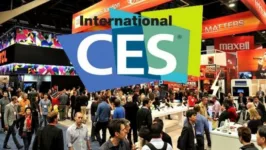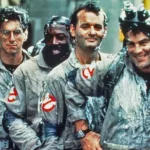At CES there are thousands of new companies that come with the hope of making it big with a new product offering and the vast majority never sell to critical mass and fail either before they get to market or in market. This is largely because the firms don’t sit back and analyze what it will take to be successful and instead toss the product into a pool with thousands of other offerings hoping that some big retailer, distributor, or reseller will pick it up and make it successful. It makes a lot of sense that this show is held in Las Vegas because Vegas sells the idea that you’ll get rich gambling when the reality is the city lives off the losers which, like the firms that show their wares at CES, outnumber the winners.
At the show there are 3 areas that will likely get the most focus this year. Wearables, IOT (Internet of Things), robots (including Drones). Let’s talk about what the bar is for each.
Robots
We’ve had robots in homes for some time now and clearly the skies are increasingly filled with Drones and the FAA is not amused. Roomba from iRobot is likely the most successful in the US and its biggest challenger will likely be a smarter product from Dyson. Dyson’s brand is stronger and more solidly connected to vacuum cleaners suggesting they can give iRobot, the firm that makes Roomba, a run for the money and the battle will largely be done with marketing assuming the Dyson product works.
For Drones the DJI Phantom with their Vision + sets the bar and here there are a number if interesting challengers but none yet with the marketing budget to unseat DJI.
This showcases the bar for robots. They have to do something folks want done well and the need to hit market with enough marketing so that they will be recognized and desired in the store. In addition, in the case of a segment where competition exists people will need to see the product as a better value than the alternatives. This isn’t a “build it and they will come” segment and if the firm can’t figure out how to get people interested in the offering or the thing doesn’t work it won’t sell
Wearables
This segment is a mess. Currently Samsung has more different products and they are the best distributed however the Moto 360 has proven more popular than any single Samsung offering and Apple is likely to school Samsung when it launches the Apple Watch. In an ill-defined market, and only a minority of folks want a wearable device and, outside of exercise, most of them aren’t really sure what they’ll use the device for. The shotgun approach of making a lot of different products only works well if you tightly market each different design to its respective audience and that makes the approach incredibly expensive to execute well which is why Samsung doesn’t seem to be getting the interest Motorola is with one product. Motorola can focus its limited resources on the folks that like an attractive product (status focused) and get them interested while Samsung’s effort is so diluted they can’t seem to get focus on any one offering. Even FitBit appears stronger and they shouldn’t be in Samsung’s class of company.
For a Wearable to sell well the company has to differentiate, they have to be able to build demand for their offering, and they still have to provide a compelling experience so that users become advocates. This is why Apple has been able to be so successful, they bring out few focused products. However Google can beat them, like Microsoft did in the 1990s, if they can get a few vendors to use their platform and fund solid offerings in the segment. Unfortunately Google, unlike Microsoft, doesn’t provide marketing co-funding and that has made adequate funding for this critical function far more rare than it otherwise would be. So Apple could easily steal the segment when they launch, however Cook doesn’t have the same marketing DNA that Jobs did and that makes their effort less of a sure thing.
IOT
There are two vendors I think of when I think IOT. They are Smart Home with Insteon and Sonos. The first has the most reliable and complete line of home control products currently in market and the second provides the best experience in whole home audio. Vendors don’t seem to recognize why both of these relatively small firms are so successful. Cisco tried to take Sonos out a few years back and failed so spectacularly they had to exit the segment largely because their product was so difficult to set up and use most of what was sold was returned.
To play in this space the line has to be broad enough to do what people want done, it has to be reliable so it works like an appliance, and people have to know enough about it to ask for it by name. Sonos lacks an outdoor solution but they have moved to more aggressive marketing making them harder to beat. Insteon is still largely installed with a set of skills most homeowners don’t have and they still lack a big marketing budget though they recently partnered with Microsoft.
What we are missing in the home control space is a better way to wire the home so the modules can simply be plugged in by the homeowner and the home doesn’t need to be rewired. This has proven daunting because it makes the initial installation even more expensive.
Qualcomm has stepped in with a solution called AllPlay and the promise is you should be able to mix—and-match components from different vendors but few know of it and I have yet to see this capability work. In addition it is focused on music and, of the two benchmark vendors Sonos is the stronger (Smart Home even resells Sonos). So the bar is very high. But, done right, a cross vendor solution could unseat Sonos.
Wrapping Up:
At CES I expect it will be hard to find vendors that even see the bar they need to meet let alone exceed it and that is why most fail. I’ll report on my findings after CES and we’ll see if there are any that can exceed what Apple, DJI, Roomba, Smart Home (Insteon), and Sonos will have out in 2015. Here is hoping you have a wonderful 2015 and I survive CES.








